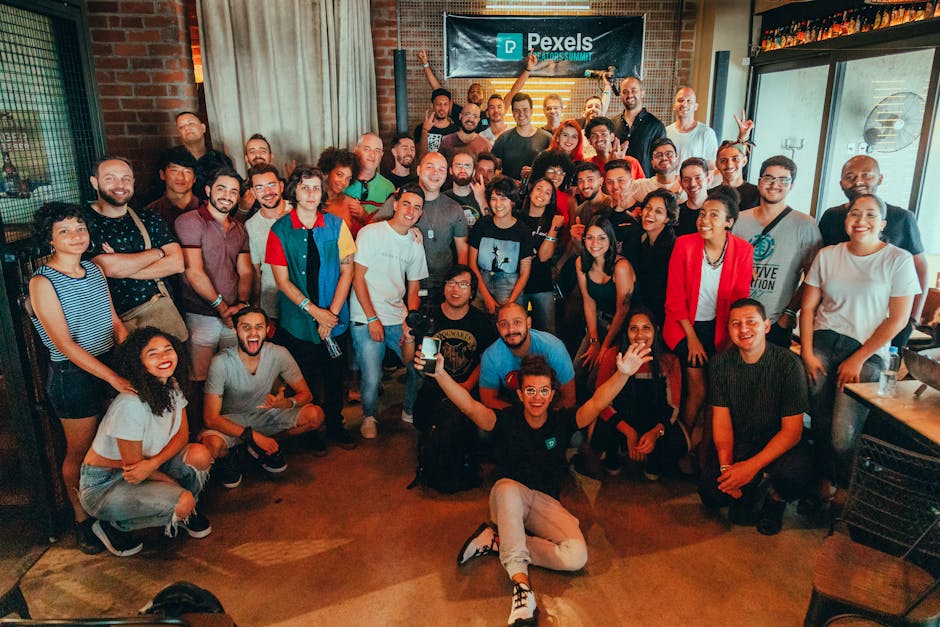- The Digital Product Market Landscape: Understanding Digital Technology Trends
- Online Courses: The Apex of Digital Product Profitability
- Other Highly Profitable Digital Products and Digital Technology Solutions
- Proven Strategies for Digital Product Success: Digital Technology Best Practices
- Leveraging AI and Automation in Digital Product Creation
- Real-World Case Studies and Success Metrics in Digital Technology
- Navigating Challenges and Maximizing Opportunities in Digital Product Sales
- The Future of Digital Products and Digital Technology Strategies
- Paid Challenges: A New Frontier in Digital Product Profitability
- Frequently Asked Questions (FAQ)
- Conclusion
In the rapidly evolving landscape of digital technology, identifying the most profitable digital product to sell online is paramount for entrepreneurs and creators. This guide delves deep into market trends, profitability metrics, and actionable strategies to pinpoint the leading contenders in the digital product space. From online courses to AI-enhanced solutions, we explore the nuances that drive success and offer a comprehensive roadmap for maximizing your online revenue.
We will explore the market data, core strategies, emerging trends, and practical applications that define success in the digital product economy. Understanding these elements is crucial for anyone looking to capitalize on the immense potential of selling digital goods and services in the modern era, leveraging cutting-edge digital technology solutions.
The Digital Product Market Landscape: Understanding Digital Technology Trends
The global digital product market is a colossal and rapidly expanding ecosystem, driven by increasing internet penetration and consumer demand for accessible, high-quality digital content. Understanding its dynamics is the first step toward identifying profitable niches and leveraging digital technology trends effectively.
Global Market Valuation and Growth
The digital media market, encompassing a wide array of digital products from courses to software, is projected to reach an astounding $560 billion by the end of 2024, demonstrating a robust year-over-year growth of approximately 12.5%. This significant valuation underscores the immense economic potential within this sector. The overall digital product industry contributes more than $2.5 trillion in value globally per year, representing nearly 6% of the combined GDP in countries where data was studied, highlighting its profound economic significance.
Key Segments and Their Contributions
While diverse, the digital product market is dominated by a few key segments. Video games lead the pack, accounting for $282 billion (50%) of the market, followed by video on demand at $182 billion (33%). E-publishing, which includes ebooks, contributes $55 billion (10%), and digital music rounds out the top segments with $41 billion (7%). These figures illustrate the varying scales of profitability across different digital product categories.
Growth Drivers and Market Expansion
The expansion of the digital product market is fueled by several critical factors related to digital technology adoption. Internet penetration is expected to reach 68% of the global population by 2025, while mobile device ownership is projected to hit 71% globally in the same year. Furthermore, social media activity is anticipated to encompass 64% of the global population by 2025. These widespread digital behaviors create a fertile ground for the consumption and sale of digital goods. According to Mastercard data, transaction volume in digital products increased 70% between 2022 and 2024, reflecting rapid adoption and market expansion.
| Digital Product Category | Estimated Market Value (USD Billions) | Market Share (%) | Key Growth Drivers |
|---|---|---|---|
| Video Games | 282 | 50 | Esports, mobile gaming, VR/AR integration |
| Video On Demand | 182 | 33 | Streaming services, original content, personalized recommendations |
| E-publishing (Ebooks, Digital Magazines) | 55 | 10 | E-readers, educational content, self-publishing platforms |
| Digital Music | 41 | 7 | Streaming platforms, personalized playlists, artist direct sales |
| Online Courses (E-learning) | 325 (by 2025) | N/A (specific segment) | Skill development, remote learning, lifelong education |

Online Courses: The Apex of Digital Product Profitability
Among the vast array of digital products, online courses consistently emerge as the most profitable option for creators and entrepreneurs. Their inherent scalability, high demand, and potential for passive income make them a standout choice in the digital product market.
Why Online Courses Lead the Pack
- Massive Market Growth: The e-learning market, a segment where online courses are dominant, is projected to be worth an astounding $325 billion by 2025. This exponential growth signifies a robust and expanding demand for digital education.
- Exceptional Scalability: Once an online course is created, it can be sold to an unlimited number of students without incurring significant additional costs per user. This “create once, sell many times” model is a cornerstone of its high profitability. This is a key aspect of digital technology solutions that offer leverage.
- High-Income Potential: Creators of online courses in the US typically earn between $5,000 and $25,000 per year per course as a passive income stream. Top-tier courses and instructors can generate significantly more, demonstrating the substantial financial upside.
- Low Delivery Costs: Unlike physical products, online courses have virtually no inventory, shipping, or storage costs. Delivery is digital, often automated, leading to high-profit margins.
Characteristics of Successful Online Courses
To maximize profitability, online courses should possess certain characteristics. They must offer genuine value, solve a specific problem, or teach a highly sought-after skill. Examples include:
- Niche-Specific Skills: Courses teaching advanced digital marketing techniques, specialized software proficiency (e.g., advanced Excel for finance, specific coding languages), or unique creative skills (e.g., professional photography editing).
- Problem-Solving Focus: Courses designed to help individuals overcome specific challenges, such as “Mastering Public Speaking Anxiety” or “Building a Profitable E-commerce Store from Scratch.”
- Certification or Accreditation: Courses that offer a certificate of completion or prepare students for industry certifications often command higher prices and attract a dedicated audience.
Platforms for Selling Online Courses
Numerous platforms facilitate the sale of online courses, each with its own advantages:
- Dedicated Course Platforms: Platforms like Teachable, Thinkific, and Kajabi offer comprehensive tools for course creation, hosting, marketing, and sales, providing creators with significant control over their content and branding.
- Marketplace Platforms: Udemy and Coursera act as marketplaces, providing a large existing audience. While they take a larger cut of sales, they offer unparalleled reach and discovery for new instructors.
- Personal Websites/Shopify Stores: Selling courses directly from a personal website or a Shopify store allows for maximum control over pricing, branding, and customer relationships, often leading to higher profit margins per sale.
Other Highly Profitable Digital Products and Digital Technology Solutions
While online courses stand out, several other digital products offer significant profitability and cater to diverse market needs, leveraging various digital technology solutions.
Ebooks and Digital Publishing
Ebooks remain a strong contender in the digital product space, forming a significant part of the $55 billion e-publishing market. Their low production costs, ease of distribution, and wide audience reach make them an attractive option. Platforms like Amazon Kindle Direct Publishing have democratized publishing, allowing authors to reach millions of readers globally. The key to profitability often lies in niching down, as exemplified by authors making over $100,000 by focusing on very specific ebook topics.
- Low Barrier to Entry: Creating an ebook requires minimal upfront investment compared to physical products.
- Passive Income Potential: Once written and published, an ebook can generate sales for years without further effort.
- Versatility: Ebooks can cover a vast range of topics, from fiction and non-fiction to how-to guides and educational materials.
- Examples: Cookbooks, self-help guides, technical manuals, children’s storybooks, and niche market reports.
Digital Templates and Resources
Digital templates, including resume templates, planners, business documents, and graphic design assets, are highly sought after due to their ability to save users time and effort. Platforms like Canva Marketplace and Etsy are thriving hubs for template creators. The profitability of templates stems from their broad appeal and passive income opportunities, though design quality is crucial.
- Resume Templates: Highly demanded by job seekers looking for professional and visually appealing resumes.
- Social Media Templates: For businesses and influencers needing consistent branding across platforms.
- Planner and Journal Templates: Catering to organizational and self-improvement markets.
- Business Document Templates: Such as contracts, invoices, and marketing plans for small businesses.
Software, Apps, and AI-Enhanced Products
The development of software, mobile applications, and particularly AI-enhanced products represents a cutting-edge frontier in digital profitability. These products combine advanced digital technology with specialized expertise to solve complex problems or automate tasks. The NFT market, closely associated with digital art and blockchain, is forecasted to reach $609 million in 2025, emphasizing the value of AI and blockchain-enabled products.
- Custom AI Prompt Collections: For users of AI tools like ChatGPT or Midjourney, providing curated prompts for specific tasks.
- Automation Workflow Templates: Solutions that streamline business processes using automation tools.
- Niche Software Tools: Small, specialized software applications that address a unique market need.
- Digital Art and Stock Media: High-quality images, videos, and audio files for creative projects.

Proven Strategies for Digital Product Success: Digital Technology Best Practices
Achieving profitability in the digital product space requires more than just a great product; it demands strategic implementation and adherence to digital technology best practices.
Niche Down Specifically
In a crowded digital marketplace, broad topics often get lost. The most successful digital products are laser-focused, addressing a very specific pain point or desire for a defined audience. Instead of a general “how to make money online” ebook, consider “How I made $100k posting on Instagram in 60 days” to stand out. This specificity attracts a highly engaged audience more likely to convert.
- Why niche down? It reduces competition, allows for targeted marketing, and positions you as an expert in a specific area.
- How to find your niche: Identify underserved markets, leverage your unique skills or experiences, and research existing demand.
- Examples of niche products:
- Online course: “Advanced SEO for Local Businesses in the Restaurant Industry.”
- Ebook: “The Beginner’s Guide to Investing in Renewable Energy Stocks.”
- Template pack: “Canva Templates for Real Estate Agents’ Social Media.”
Utilize Multiple Platforms and Bundling
Diversifying your sales channels and offering product bundles can significantly boost revenue. Selling on marketplaces like Etsy, Gumroad, or directly via Shopify stores expands your reach. Bundling related digital products or combining them with physical print-on-demand merchandise can increase perceived value and average order value.
- Marketplace Presence: Leverage the existing traffic of platforms like Etsy for templates, Gumroad for various digital goods, and Udemy for courses.
- Direct Sales: Establish your own Shopify store or website for greater control over branding, pricing, and customer data.
- Product Bundling: Offer a “starter pack” of templates, an “all-inclusive” course package, or an ebook combined with a related digital workbook. Printful recommends bundling digital products with print-on-demand merch, leveraging designs into multiple revenue streams.
Optimize Quality and Design
Regardless of the digital product type, professional quality and appealing design are non-negotiable. For templates, ebooks, and digital art, aesthetics play a crucial role in attracting customers and building trust. High-quality content, clear instructions, and user-friendly interfaces are essential for online courses and software.
- Visual Appeal: Invest in good graphic design for covers, promotional materials, and the product itself.
- Content Excellence: Ensure your content is well-researched, accurate, and provides genuine value.
- User Experience: For courses and software, ease of navigation and intuitive design are paramount.
- Testing and Feedback: Before launch, thoroughly test your product and gather feedback to refine it.
Leveraging AI and Automation in Digital Product Creation
The integration of artificial intelligence (AI) and automation is revolutionizing the creation and distribution of digital products, offering new avenues for efficiency and profitability. This represents a significant shift in digital technology strategies.
AI-Enhanced Digital Products
AI is not just a tool for optimizing existing processes; it’s becoming a component of the digital products themselves. Products that leverage AI offer unique value propositions and cater to a growing demand for intelligent solutions. Shopify points out that AI-enhanced digital products, such as custom AI prompt collections or automation workflow templates, represent a new profitable frontier by combining technology and expertise.
- Custom AI Prompt Collections: Curated sets of prompts for generative AI models (e.g., ChatGPT, Midjourney) tailored for specific industries (e.g., “AI Prompts for Real Estate Marketing,” “AI Prompts for Creative Writing”).
- AI Workflow Templates: Pre-built automation sequences using AI tools to streamline tasks like content creation, customer service responses, or data analysis.
- AI-Generated Content Assets: Selling unique digital art, music, or text generated or enhanced by AI, often as NFTs or stock media.
- Personalized Learning Modules: AI-driven adaptive learning paths within online courses that adjust to a student’s progress and learning style.
Automation in Product Development and Marketing
Automation tools can significantly reduce the time and effort required to create, market, and deliver digital products, freeing up creators to focus on innovation and content quality.
- Content Generation: Using AI writers for initial drafts of ebook chapters, blog posts for course promotion, or social media captions.
- Design Automation: Employing tools that automate aspects of graphic design for templates, course materials, or promotional banners.
- Marketing Automation: Setting up automated email sequences for lead nurturing, sales funnels, and post-purchase follow-ups.
- Customer Support Automation: Implementing chatbots or AI-powered FAQs to handle common customer inquiries, improving efficiency and customer satisfaction.
The Intersection of AI, Blockchain, and Digital Assets
The rise of NFTs (Non-Fungible Tokens) and blockchain technology further amplifies the potential of AI-enhanced digital products. Digital art, music, and even unique AI-generated code can be tokenized and sold as scarce, verifiable assets. The NFT market, with its projected $609 million valuation in 2025, highlights the growing value placed on unique digital ownership and the convergence of advanced digital technology trends.

Real-World Case Studies and Success Metrics in Digital Technology
Examining real-world examples provides tangible proof of the profitability of various digital products and illustrates effective digital technology strategies.
Online Course Success Stories
Platforms like Udemy and Teachable host countless success stories where instructors have generated significant passive income. For instance, a creator teaching a niche software skill could easily generate $10,000 to $20,000 annually from a single course, with minimal ongoing effort after the initial creation. The key is often evergreen content that remains relevant over time, attracting new students continuously.
- Example 1: A data science instructor on an online learning platform created a course on “Python for Data Analysis.” By focusing on practical, project-based learning, the course attracted over 50,000 students, generating hundreds of thousands in revenue over several years.
- Example 2: A fitness coach launched a specialized online course on “Post-Natal Core Recovery” through her own website. Through targeted social media marketing and testimonials, she built a loyal community and achieved consistent monthly revenue of over $15,000.
Niche Ebook Profitability
The power of niching down in ebooks is evident in numerous success stories. A successful Kindle Direct Publishing author reportedly makes over $100,000 by focusing on very niche ebooks, such as “how to grow on social media in specific ways.” This highlights that specificity often trumps generality in attracting dedicated buyers.
- Case Study: An author specializing in urban gardening published an ebook titled “Hydroponics for Small Apartment Spaces.” Despite the narrow focus, the book consistently ranked high in its category on Amazon, generating over $5,000 monthly due to its highly targeted audience and practical advice.
Printable Worksheets and Digital Templates
The market for printable and digital templates is surprisingly lucrative, especially when addressing specific needs. A case cited on a YouTube video shows sellers generating $800+ monthly from custom tracing worksheets and $3,000+ from printable activity worksheets. These examples tap into niches like educational products for parents, demonstrating the power of solving real-world problems with simple digital solutions.
- Example 1: A graphic designer created a collection of “Wedding Invitation Templates for DIY Brides” on Etsy. By offering customizable designs and excellent customer support, she built a thriving business, earning over $2,500 per month.
- Example 2: An educator developed “Printable Math Worksheets for Grade 3 Common Core Standards.” Selling these on Teachers Pay Teachers and her own website, she provided valuable resources to parents and teachers, generating a steady income stream.
Navigating Challenges and Maximizing Opportunities in Digital Product Sales
While the digital product market offers immense opportunities, creators must also be aware of potential challenges and how to overcome them using robust digital technology solutions.
Common Challenges
- Market Saturation: Popular niches can become crowded, making it difficult for new entrants to stand out. This necessitates a strong unique selling proposition and effective marketing.
- Marketing and Visibility: Simply creating a great product isn’t enough; effective marketing, SEO, and social media presence are crucial for discovery.
- Piracy and Copyright Infringement: Digital products are susceptible to unauthorized sharing. Implementing protective measures and monitoring for infringement is important.
- Technical Support: Depending on the product (e.g., software, complex courses), providing adequate technical support can be time-consuming.
- Payment Processing Fees: While digital products have low production costs, payment gateways and platforms often take a percentage of sales, impacting net profit.
Strategies for Overcoming Challenges
- Hyper-Niche Specialization: As discussed, drilling down into a very specific sub-niche can significantly reduce competition and make marketing more effective.
- Building an Audience: Focus on building an email list, a strong social media following, or a community around your expertise before launching products. This pre-built audience provides immediate buyers.
- Content Marketing: Create valuable free content (blog posts, YouTube videos, podcasts) that showcases your expertise and naturally leads potential customers to your paid digital products.
- Leveraging Testimonials and Social Proof: Positive reviews and success stories from early customers build trust and encourage new sales.
- Strategic Pricing: Don’t underprice your products. Value your expertise and price competitively based on the value provided, not just the production cost. Consider tiered pricing for different levels of access or features.
Maximizing Opportunities with Digital Technology Best Practices
The continuous evolution of digital technology presents ongoing opportunities for innovation and growth.
- Personalization: Use data analytics to offer personalized product recommendations or customized learning paths within courses.
- Interactive Elements: Incorporate interactive quizzes, simulations, or AI-powered feedback mechanisms into courses and digital tools to enhance engagement.
- Community Building: Create exclusive online communities for your customers, fostering loyalty and providing opportunities for upsells and cross-sells.
- Cross-Platform Compatibility: Ensure your digital products are accessible and functional across various devices and operating systems.
- Subscription Models: For certain digital products (e.g., templates, software, exclusive content), a subscription model can provide recurring revenue and predictable income streams.
The Future of Digital Products and Digital Technology Strategies
The digital product landscape is dynamic, constantly shaped by technological advancements and shifting consumer behaviors. Understanding future trends is crucial for long-term success and developing resilient digital technology strategies.
Emerging Technologies and Their Impact
- Augmented Reality (AR) and Virtual Reality (VR): These technologies are set to transform digital learning and entertainment. Imagine AR-enhanced textbooks, VR-based training simulations, or immersive digital art experiences.
- Blockchain and NFTs: Beyond digital art, blockchain could enable verifiable ownership of digital licenses, certifications, and unique digital assets, creating new markets for creators.
- Advanced AI Integration: AI will move beyond content generation to more sophisticated roles, such as personalized tutoring within online courses, dynamic content adaptation, and predictive analytics for market trends.
- Metaverse and Web3: The development of interconnected virtual worlds will open up entirely new categories of digital products, from virtual real estate and fashion to interactive experiences and digital identities.
Shifting Consumer Preferences
Consumers are increasingly seeking personalized, interactive, and value-driven digital experiences. This shift will influence the types of digital products that thrive.
- Experiential Learning: Demand for online courses that offer hands-on projects, live interactions, and practical application will grow.
- Micro-Learning and Bite-Sized Content: Busy consumers prefer short, digestible content modules that can be consumed on the go, leading to a rise in micro-courses and quick-guide ebooks.
- Sustainability and Ethics: As consumers become more conscious, digital products that align with ethical production, data privacy, and environmental sustainability may gain preference.
- Community-Driven Products: Digital products that foster a sense of community and collaboration among users will likely see increased engagement and loyalty.
The Creator Economy and Direct-to-Consumer Models
The creator economy continues to empower individuals to monetize their skills and passions directly. This trend favors digital products that can be easily created and distributed by independent creators.
- Increased Creator Tools: More accessible and powerful tools for digital product creation (e.g., no-code platforms, AI-assisted design) will lower the barrier to entry for new creators.
- Subscription-Based Models: More creators will adopt subscription models for exclusive content, communities, or ongoing access to digital resources, providing stable recurring revenue.
- Hybrid Models: Blending digital products with physical goods (e.g., a course bundled with a physical workbook, digital art with print-on-demand merchandise) will become more common, as recommended by Printful.
Paid Challenges: A New Frontier in Digital Product Profitability
While traditional digital products like online courses and ebooks offer significant profitability, a growing number of creators and businesses are turning to paid challenges as an exceptionally effective and high-profit digital product. This innovative approach addresses some of the limitations of traditional models, particularly regarding investment-to-return ratios and direct engagement, representing a cutting-edge digital technology solution for monetization.
Why Paid Challenges are Gaining Traction
Many traditional platforms for selling digital products, while offering reach, often come with significant fees or require massive scale to generate substantial income. For example, to generate $20,000 from a typical online course priced at $99, you might need hundreds of sales, which can be challenging to achieve consistently. Paid challenges, however, offer a more direct and often more profitable path:
- High Engagement and Completion Rates: Challenges are time-bound, goal-oriented, and often include live interaction, leading to much higher engagement and completion rates compared to self-paced courses. This direct engagement builds stronger relationships and trust.
- Perceived Value: The interactive, supportive, and results-oriented nature of challenges allows creators to charge a premium. Participants are paying not just for content, but for accountability, community, and direct access.
- Faster Revenue Generation: Challenges typically run for a shorter, defined period (e.g., 5 days, 30 days), allowing for quicker revenue cycles compared to evergreen courses that require continuous marketing.
- Simplified Sales Funnel: The urgency and clear outcome of a challenge often simplify the sales process, making it easier to convert prospects.
The Math Behind Paid Challenge Profitability
Consider the example of generating $20,000. With a paid challenge priced at $99, you would only need approximately 202 participants to reach this revenue goal. This number is often much more attainable for creators than the thousands of video views or hundreds of course sales required on platforms that take a significant cut or have lower price points. The direct payment model and higher perceived value mean more profit stays with the creator.
This model is particularly appealing because it focuses on a smaller, more committed group of participants, fostering a strong community and delivering tangible results, which in turn leads to powerful testimonials and repeat business. It’s a highly effective application of digital technology best practices for community building and direct monetization.
Implementing a Successful Paid Challenge
- Define a Clear Outcome: What specific, tangible result will participants achieve by the end of the challenge? (e.g., “Launch Your First Podcast in 5 Days,” “Write Your Ebook Outline in 7 Days”).
- Structure Daily Tasks: Break down the outcome into actionable, bite-sized tasks for each day of the challenge.
- Incorporate Live Interaction: Daily live Q&A sessions, webinars, or coaching calls significantly increase engagement and value.
- Build a Community: Create a private group (e.g., Facebook group, Slack channel) where participants can interact, share progress, and support each other.
- Choose the Right Platform: Platforms designed for community and course delivery are ideal. CommuniPass is highlighted as an all-in-one platform for this, allowing creators to start for free and manage their challenges, communities, and content seamlessly.
The shift towards paid challenges reflects a growing understanding among creators that direct engagement and high-value, results-oriented programs can offer a more lucrative and fulfilling path than simply chasing volume on traditional platforms. It’s a powerful evolution in how digital products are sold and consumed.
Frequently Asked Questions (FAQ)
How do I determine the most profitable digital product for me to sell?
To determine the most profitable digital product for you, align your expertise and passions with market demand and profitability. Online courses are generally the most profitable, but niche ebooks or templates can also be highly lucrative if they solve a specific problem for a targeted audience. What are the key advantages of selling digital products over physical products?
The key advantages of selling digital products include high-profit margins due to no inventory or shipping costs, unlimited scalability (sell once, deliver infinitely), and the ability to reach a global audience instantly. They also offer flexibility in creation and updates. Why should I consider online courses as my primary digital product?
You should consider online courses as your primary digital product because the e-learning market is projected to reach $325 billion by 2025, offering immense growth potential. They provide exceptional scalability and significant passive income streams, making them highly profitable. When to use a marketplace versus my own website for selling digital products?
Use a marketplace (e.g., Udemy, Etsy) when starting out to leverage their existing audience and infrastructure. Transition to or supplement with your own website (e.g., Shopify) when you want more control over branding, pricing, customer data, and higher profit margins per sale. What role does AI play in the future of digital products?
AI will play a transformative role by enabling personalized content, automated creation processes, and intelligent product features. AI-enhanced products like custom prompt collections or automation templates are already emerging as profitable niches, blending technology with expertise. How can I make my digital product stand out in a saturated market?
To stand out, hyper-niche your product to a specific audience or problem. Focus on exceptional quality, unique value propositions, and strong branding. Effective marketing, building an engaged audience, and leveraging testimonials are also crucial for visibility. Are ebooks still profitable in 2024-2025?
Yes, ebooks remain profitable, especially within niche markets. The e-publishing market is valued at $55 billion, and authors focusing on specific topics can earn significant income. Low production costs and wide distribution platforms like Amazon Kindle Direct Publishing contribute to their continued viability. What are the best practices for marketing digital products?
Best practices for marketing digital products include building an email list, leveraging social media, creating valuable content (blogs, videos) that showcases expertise, running targeted ads, and utilizing SEO to improve organic visibility. Testimonials and affiliate marketing can also be highly effective. How do paid challenges differ from traditional online courses in terms of profitability?
Paid challenges often offer higher profitability per participant due to their interactive, results-oriented nature and premium pricing. They require fewer participants to generate significant revenue (e.g., 200 people at $99 for $20,000) compared to the larger volume needed for lower-priced, self-paced courses, leading to better investment-to-return ratios for creators. What is CommuniPass and how can it help with digital product sales?
CommuniPass is an all-in-one platform designed to help creators launch and manage paid challenges, communities, and content. It simplifies the process of hosting interactive programs, fostering engagement, and directly monetizing expertise, allowing creators to start for free and build profitable digital product businesses. What are the best types of digital templates to sell for profit?
The most profitable digital templates include resume templates, social media templates, planners, journals, and business document templates. Their profitability stems from broad appeal, time-saving benefits for users, and the ability to generate passive income once created, especially when sold on platforms like Etsy or Canva Marketplace. How important is quality design for digital products?
Quality design is critically important for digital products. It enhances perceived value, builds trust with customers, and improves user experience. Professional aesthetics for ebooks, user-friendly interfaces for courses, and polished designs for templates are essential for attracting buyers and competing effectively in the market. Can I combine different types of digital products for increased revenue?
Absolutely. Combining different digital products, such as bundling an online course with a related ebook or templates, can significantly increase revenue. This strategy enhances perceived value, caters to diverse learning styles, and allows for tiered pricing options, maximizing your average order value and overall profitability. What are the main growth drivers for the digital product industry?
The main growth drivers for the digital product industry include increasing global internet penetration (68% by 2025), widespread mobile device ownership (71% by 2025), and high social media activity (64% by 2025). These factors create a vast and accessible market for digital goods and services.
Conclusion
The digital product landscape offers unparalleled opportunities for creators and entrepreneurs to generate substantial income. While the market is vast, online courses consistently stand out as the most profitable digital product to sell online, driven by their immense scalability, low delivery costs, and the booming e-learning market projected to reach $325 billion by 2025. Other highly profitable options include niche ebooks, digital templates, and innovative AI-enhanced products, all benefiting from the pervasive adoption of digital technology.
Success in this arena hinges on strategic implementation: niching down, leveraging multiple sales platforms, prioritizing quality, and embracing emerging technologies like AI. Furthermore, the rise of paid challenges presents a compelling new frontier, offering higher engagement and more direct, efficient paths to significant revenue compared to traditional models. By understanding these dynamics and applying proven strategies, creators can effectively navigate the digital product ecosystem and build highly profitable online businesses.







